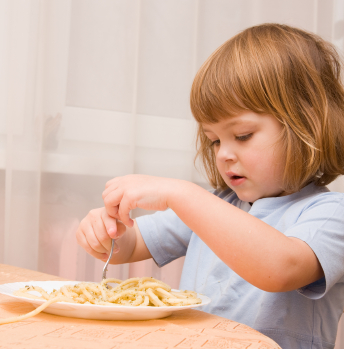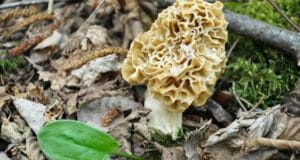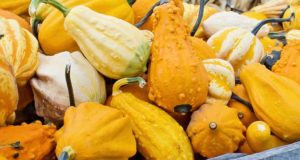When I was a kid, my younger sister spent one summer eating nothing but pasta. My parents tried to tempt her with every good food under the sun, but all she wanted was spaghetti. Eventually, we discovered that it was possible to make pasta – good pasta – from scratch. It cost about the same as getting it from the store, but it got us all more invested in the question of “what’s for dinner?”
By making your own pasta, you can control the quality of ingredients that go in it. If you grind your own flour, for example, then you know exactly where the wheat in your pasta came from. In addition, learning to make pasta helps expand your off-grid recipe bank. When times get tough, it’s nice to have familiar comforts, and in my house, homemade spaghetti is definitely one of those family favorites.
Making pasta from scratch is simple. The recipe is straightforward, and for kids, it’s a great chance to play with their food while also learning a useful skill. Preparing the pasta takes twenty to thirty minutes of hands-on work (depending how much you’re making), along with periods of rest for the dough and the time you’ll need to dry the pasta before dinner. Picky eaters can enjoy eating “their” pasta, and parents have an interesting craft activity to keep little hands busy being productive throughout the day.
Homemade Pasta Recipe
The basic recipe for homemade pasta hasn’t changed in centuries. The key is knowing how many people you are planning to serve. From there, it’s simply a matter of ratios and taste.
To make pasta from scratch, you need flour, eggs, and salt. That’s it in terms of the core ingredients, and for equipment, all you really need are a pair of hands, a fork, a knife, some plastic wrap, and a rolling pin or other flattening device (my mom would give us cans of beans wrapped in wax paper). There are professional pasta rolling and cutting machines, but those are more of a convenience than an absolute necessity.
For pasta for two people, you need one cup of flour, two eggs, and a dash of salt. Pasta for six just builds on the ratio – three cups of flour, six eggs, and more salt. Farm fresh eggs are better than store bought, as you’ll really be able to taste the quality difference. White or wheat flour is a matter of personal taste, and feel free to get creative with semolina, quinoa, or other vegetable flours as your kids get more comfortable with the process. (This is a great way to sneak in some veggies if you have picky eaters!)
Prepare now for surging food costs and empty grocery store shelves…
Preparation Tips
To mix up the pasta, you need a clean, flat surface. My mother found laying down a generous amount of wax paper made the clean up easier, but that’s up to you.
Place the floor in the middle of the mixing surface. Shape it into a volcano and sprinkle on all the salt you want. Next, make a deep crater in the volcano.
Crack the eggs into the crater. They should be fully contained by the rim of the flour volcano, making a mixing bowl for them. Using the fork, start mixing everything together. For little kids, you may get a smoother mix if you crack the eggs into a bowl and whip the whites and yolks together before putting it in the volcano.
Once the egg and flour mix is a mass of dough, put aside the fork and get those little hands involved. They’ll want to knead the mix around the mixing surface, picking up any loose flour, and then keep kneading it for about ten minutes. It will be pretty sticky in the beginning, and after a few minutes of kneading, dust your kids’ hands with flour so their fingers don’t get overwhelmed. The dough should end up with a smooth, firm, elastic consistency, not unlike fresh Play-Doh.
When the dough is done being kneaded, it needs to be wrapped in plastic wrap to rest for at least thirty minutes. Some let their dough rest for up to two hours. And if you don’t want to use plastic wrap, it can be wrapped in a cloth towel – the key is that you want it to firm up a bit without totally drying out.
When the time is up, roll out the pasta. Divide the dough into handfuls for easier rolling and management. As it’s rolled out, you’ll want to stretch it a bit to get it nice and thin. It should end up as skinny as the kids can make it without tearing it (about an eighth of an inch thick).
From there, use a knife to cut it into thin strips. If they want, the kids can cut the strips into short lengths and twist the middles for bowties. Alternatively, little cookie cutters can make fun pasta, too. Square cuts can be pinched together to make stuffed raviolis.
When all the pasta is cut or shaped, let it dry to cook or store. Shapes can dry on wax paper, while strips can be bundled into little nests to dry or hung off an unused dish rack or an empty coat hanger.
Cooking Tips
When cooking homemade pasta, note that it doesn’t have to be 100 percent dry before you cook with it (although it does need to be completely dry to store it). In addition, you don’t want to cook it too long or it gets a bit gummy. The average cook time – adding it to fully boiling water – is about five minutes.
 Off The Grid News Better Ideas For Off The Grid Living
Off The Grid News Better Ideas For Off The Grid Living





